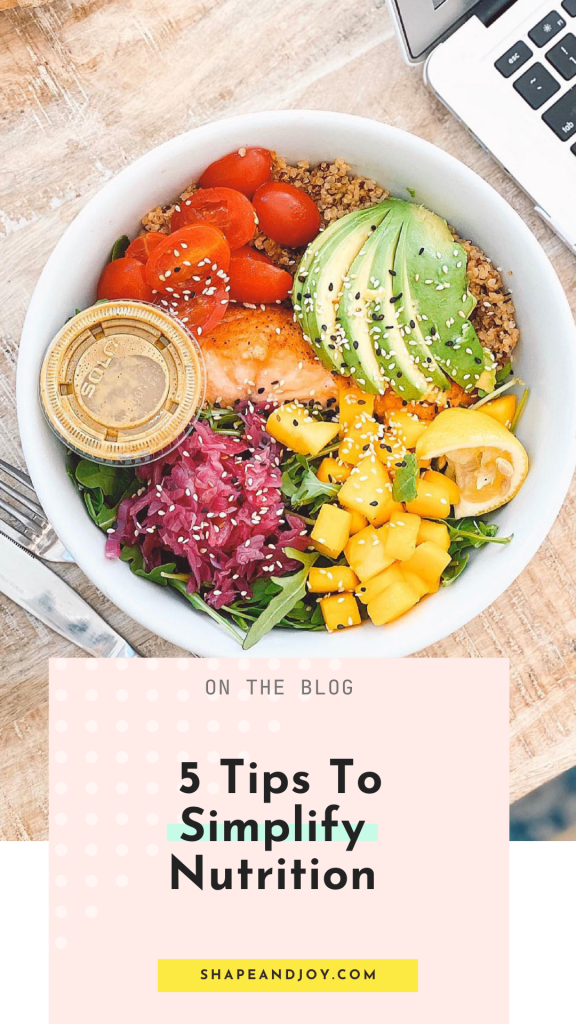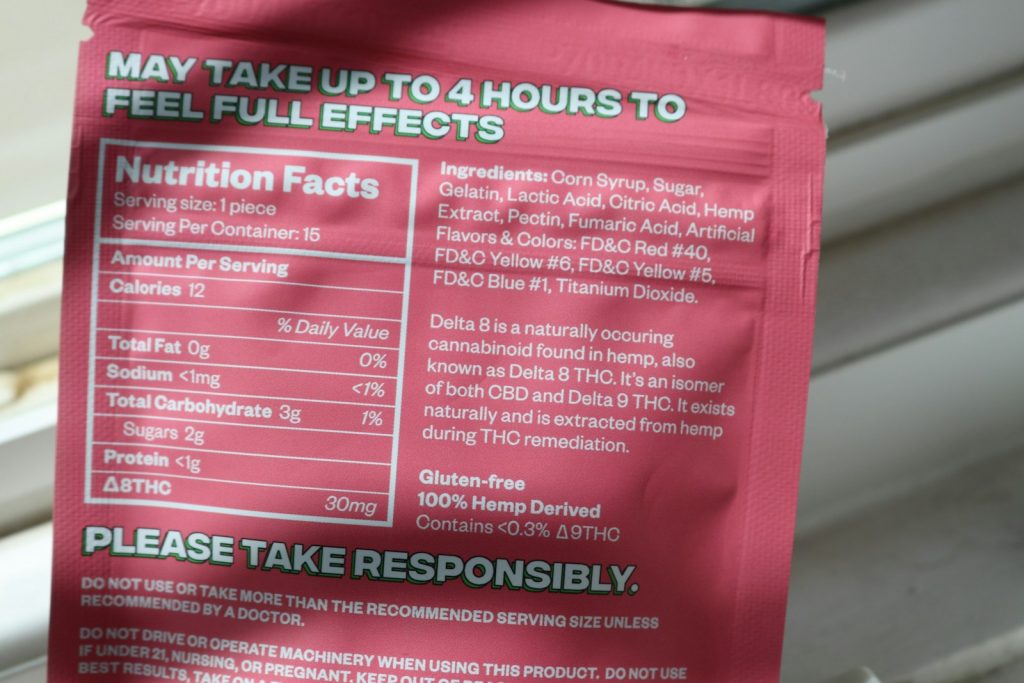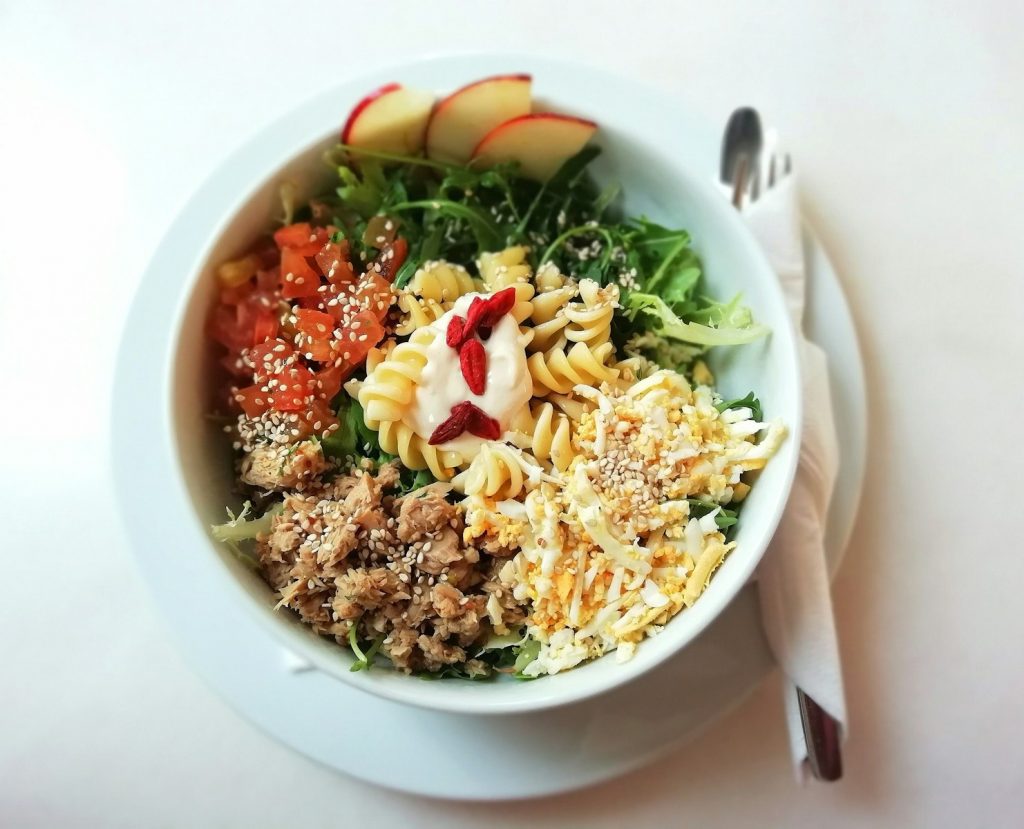Introduction
Do you want to eat healthier but are overwhelmed with all the different nutrition advice available? Eating right and staying healthy can be hard work. There are so many conflicting studies and theories about what you should and shouldn’t eat. It can be overwhelming just to know where to start. But good nutrition doesn’t have to be a chore. In this post, I want to discuss 5 tips that simplify nutrition and help you get all the nutrients your body needs.
WANT A MORE DETAILED BREAKDOWN OF NUTRITION? > Science-Based Nutrition: 5 Tips To Lose Weight The Healthy Way

Table of Contents
- Introduction
- 1. Know What You Need
- 2. Focus on Quality
- 3. Make It Fun
- 4. Learn to Read Labels
- 5. Find Balance
- Simplify Nutrition: Conclusion
1. Know What You Need
Understanding Macronutrient Distribution
It’s important to make sure you are getting the right amount of each macronutrient to help keep yourself healthy and energized. The amount of each varies person-to-person depending on your activity level, body type, and age. Protein helps your body heal, rebuild, and repair. Carbohydrates provide it with energy and dietary fibre .And fat helps you absorb essential vitamins and is necessary for cellular growth and function.
The Acceptable Macronutrient Distribution Range (AMDR) for the average adult is:
- Carbohydrate: 45% to 65% of total calories
- Fat: 20% to 35% of total calories
- Protein: 10% to 35% of total calories
Personalising Your Macronutrient Balance
But it’s important to determine the right balance of these macronutrients that work best for you. Nutritional needs change over time, so you should regularly reassess the type and amount of fuel your body needs to function at its best. Even if it’s hard to find the perfect balance, taking the time to assess your nutrition needs will pay off in the long run.

If for example you take up weight lifting, increase your protein intake to help build muscle tissue. If you begin training for long distance running, increase your carb intake for the extra energy. I recommend the book ‘Training Food: Get the Fuel You Need to Achieve Your Goals Before During and After Exercise by Renee McGregor‘ if you are taking on any new sport or exercise.
Even as we age, our macronutrient needs change. We begin to lose more muscle after the age of 30, so protein becomes even more important.
Taking these factors into consideration can help you tailor your diet to your own specific needs. Making sure you’re eating healthy, nourishing food is essential to feeling your best!
Building a balanced plate doesn’t have to be complicated. I’ve broken it down step by step in my Beginner’s Guide to Building a Balanced Plate.
POSTS YOU MAY BE INTERESTED IN:
2. Focus on Quality
The quality of your food makes all the difference! Choose high-quality foods that will provide the most nutrition for your calorie intake.

An important way to simplify nutrition choices is to focus on whole foods, like vegetables, fruits, grains, nuts, and legumes. These foods provide the most concentrated source of essential vitamins, minerals, and nutrients. This includes foods that are minimally processed. A minimally processed food usually just means that the food is still in it’s whole form, but has been preserved or cut-up in some way.
Processed (and especially ultra-processed foods) tend to be high in calories and low in nutrients, so they should be consumed in moderation. They often don’t help with satiety and can sometimes leave you hungrier than before you ate.
Opt for complex carbohydrates over simple carbohydrates if you’re looking for an energy boost that will last throughout the day. Complex carbs are broken down more slowly and provide sustained energy, while simple carbs provide a quick but short-lived burst of energy. And choose foods that contain healthy unsaturated fats (like in olive oil, nuts, avocados, and fatty fish like salmon) over saturated fats where you can.
If you’re looking to simplify your nutrition while staying full and satisfied, check out my list of Wholesome Foods for Sustainable Weight Loss.
3. Make It Fun

Experiment with different flavours and textures to make eating healthy food more enjoyable!
Instead of using the same ingredients for a meal every day, vary them with different spices and herbs, or use something like balsamic vinegar or olive oil to add extra flavour to a meal. You can even make your own desserts or snacks with healthier ingredients, like chia seed jam or baked oats. Eating healthy doesn’t have to be dull! Making eating fun and exciting is the key.
Making healthy eating a social activity can make it much more enjoyable. Having something to look forward to and share with your family or friends can help make healthy eating more of a pleasure than a chore. For example, you can commit to having a cooking night with a friend once a week where you both make or try a new meal together. This can be a great way to explore new recipes and get creative in the kitchen.
POSTS YOU MAY BE INTERESTED IN:
4. Learn to Read Labels

One way to simplify nutrition is to read labels. By looking at ingredient lists, you can determine what is in the food, as well as the serving size. And aim for foods that don’t have huge lists of ingredients you can’t pronounce! Pay attention to the substances or additives in the food, like salt, sugar, or fat. Aim for foods that are low in saturated fats, high in fibre, and rich in vitamins and minerals.
You’ll often find that foods marketed as ‘low fat’ or ‘zero fat’ have had sugar added to them. In essence, what these companies are doing is replacing the fat with sugar in order to make the food taste better. It is especially important to be mindful of this as most of these ‘low fat’ or ‘zero fat’ products are often marketed as healthy alternatives.
By doing a little bit of research and taking the time to understand the nutritional value of the food you’re eating, you can make the most informed decision about your health.
POSTS YOU MAY BE INTERESTED IN:

5. Find Balance
Find a balance between eating healthier foods and the treats you love, you don’t have to completely cut out the unhealthy foods you enjoy!
I find the best approach to nutrition is the 80/20 approach. This means aiming for whole nutrient-dense foods 80% of the time and leaving room for indulgences and treats 20% of the time. This allows for flexibility and balance in your diet, so you never feel restricted or deprived.
You will fuel your body with the nutrients it needs to function at a high level but ensure you’re still enjoying the occasional treat without feeling guilty about it. Ultimately, it’s about finding a balance that works for you and your lifestyle.
For those who like a little more structure, learning how to meal plan using macros could be a game changer. I’ve got all the details in Meal Planning by Macros.
Eating well doesn’t have to be complicated. Often, simplifying our approach to nutrition can make it easier to stick with healthy habits. If you’re ready to move beyond fads and focus on food that nourishes without stress, explore Victoria’s Secret vs. Reality: A Sustainable Meal Plan for Real Life. It covers easy, balanced meal ideas that fit perfectly into a busy lifestyle.
POSTS YOU MAY BE INTERESTED IN:

Simplify Nutrition: Conclusion
Nutrition should be simple and accessible, not complicated or intimidating. Everyone deserves to understand how to nourish their body and make it as healthy as possible. Set realistic expectations, start small and make incremental changes, seek help where you need it and learn to forgive yourself! You have the power to make nutrition work for you.
I hope this post has helped to simplify nutrition for you! What have you found most helpful in this post? Let me know in the comments below!